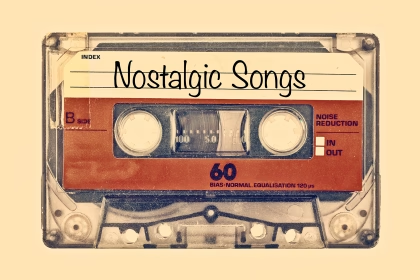Motions introduces a Speech-to-Text Analysis feature, integrating AssemblyAI’s API to transcribe and analyze audio/video files. It offers speaker detection, sentiment analysis, and summarization, supporting languages like English, Dutch, French, German, Italian, Portuguese, and Spanish. This tool benefits academic research, market studies, and customer experience management.
Table of Contents
Unlocking Speech-to-Text Analysis in iMotions
The ability to analyze spoken language has become essential for researchers, UX designers, and marketers. To meet this growing demand, iMotions has integrated an advanced speech-to-text analysis feature powered by AssemblyAI.
This feature automatically transcribes and analyzes audio or video files, offering key insights into speaker identification, sentiment analysis, and discourse summarization. Whether you’re conducting qualitative research, customer feedback analysis, or cognitive studies, this feature revolutionizes the way we process speech data.

This integration marks a significant milestone in our data collection and analysis endeavors, enabling iMotions users to unlock deeper insights from spoken language and empower researchers and analysts with enhanced capabilities for understanding and interpreting human communication. This article will give a general overview of what exciting capabilities iMotions users can expect from this new integration.
Import, Transcribe, and Analyze Speech with iMotions
The new speech-to-text analysis feature in iMotions offers a seamless way to import, transcribe, and analyze audio or video files, providing deep insights into spoken interactions. With the power of AssemblyAI’s API, users can automatically convert speech to text and extract meaningful linguistic data.
This advanced tool supports:
- Speaker Identification – Detects and separates multiple speakers in a conversation
- Discursive Valence Detection – Recognizes positive, negative, or neutral language
- Speech Summarization – Extracts key takeaways from lengthy conversations
For years, speech-to-text and speech analysis have been among the most requested features from iMotions users. The ability to analyze interviews, focus groups, speeches, or recorded interactions is invaluable, helping researchers and businesses uncover patterns, emotions, and conversational trends that would otherwise be difficult to detect.
Global Accessibility & Multilingual Support
iMotions serves a diverse global user base, making it essential to ensure language accessibility for both researchers and respondents.
Currently, the speech-to-text feature supports:
- English (US, UK, AUS, Global)
- Dutch
- French
- German
- Italian
- Portuguese
- Spanish
More languages are on the way, ensuring that researchers worldwide can leverage this tool to transcribe and analyze speech in their native languages.
A Wide Range of Applications
For academic researchers, the speech-to-text feature in iMotions is a powerful tool for conducting interviews, focus groups, and qualitative research. Researchers can now seamlessly transcribe and analyze recorded conversations, eliminating the need for time-consuming manual transcription.
The ability to auto-transcribe and analyze speech streamlines the data processing phase of research projects. With discursive sentiment and valence analysis, it also helps highlight linguistic features and speech patterns that might have otherwise been overlooked.
With iMotions’ new speech analysis feature, users can identify speakers and assign individual tracks to each, making it easier to analyze conversations with multiple participants.
But the value of speech-to-text analysis extends far beyond academic research.
Industries like market research, customer experience management, and sentiment analysis can now take a deeper dive into human communication, unlocking previously untapped insights.
Organizations can:
- Gain deeper customer insights through interviews & real-time feedback
- Analyze large-scale call center interactions for trends and sentiment shifts
- Extract valuable data from focus group discussions and social media conversations
The ability to process, transcribe, and analyze spoken data means decision-makers can act faster, more accurately, and with greater confidence, using comprehensive linguistic analysis to drive better outcomes.

How Speech-to-Text and Speech Analysis Works in iMotions
iMotions’ speech-to-text analysis is powered by AssemblyAI’s cloud-based API, providing fast, accurate, and automated speech processing.
Getting Started: API Activation
To access this feature, users must purchase a unique API license key from AssemblyAI and activate it within the iMotions software. Once activated, the system is ready to process and analyze speech seamlessly.
Simple & Automated Workflow
Using speech-to-text and sentiment analysis in iMotions is effortless:
- Step 1: Select the study you want to process
- Step 2: Choose speech-to-text from the post-processing menu
- Step 3: Let iMotions automatically transcribe and analyze speech in the background
Just like other post-processing features, the system runs efficiently behind the scenes, requiring no manual intervention.
What Happens After Processing?
Once the speech data is processed, results are stored as annotations, offering:
- Speaker Identification – Each speaker is separated and labeled
- Transcribed Text Blocks – Every spoken phrase is converted into text
- Sentiment Analysis – Detect whether speech is positive, negative, or neutral
By automatically breaking down audio files into structured insights, iMotions not only saves time but also provides a clear discursive overview of each speaker, helping researchers identify key patterns and linguistic nuances effortlessly.
Look out for more voice analysis features from iMotions
The release of the speech-to-text feature marks the beginning of iMotions’ venture into voice and speech analysis. Later in the year, we will release an entire module dedicated to voice analysis, which we are very excited about. If you are interested in staying updated with news from iMotions, we recommend subscribing to our monthly newsletter or following us on LinkedIn.
If you are interested in our speech-to-text feature and would like to use it in your research, please do not hesitate to reach out to us here.











